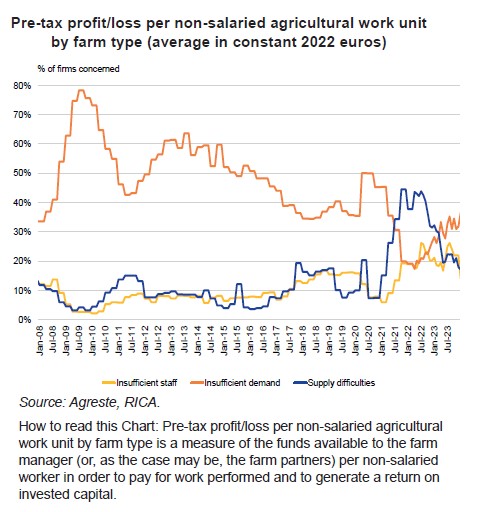Disparities in Farm Income
The standard of living among farm households is close to the national average. However, this headline figure masks both a higher workload and sharp income disparities. Farm income varies according to farm size and type. Climatic conditions and global market volatility are also major sources of year-to-year income instability, which is partially offset by subsidies.
Income disparities between farmers are significant and depend on economic parameters such as farm size and production type.
In aggregate terms, real farm income per work unit has been growing on average since 2010, despite a dip in 2023 following a record year in 2022. Farmers’ incomes are subject to acute cyclical fluctuations due to climatic conditions and global food markets. However, farm subsidies help to stabilise these incomes to some extent.
Although the median standard of living among farm households is similar to that among all working French households, the headline figure masks significant disparities between farms and reflects a higher workload:
– In 2020, the poverty rate among people in farm households was 16%, ranging from over 20% for livestock farmers to 12% for arable farmers. By comparison, the poverty rate among the French population as a whole was 14%.
– In 2022, farmers worked an average of 15 hours more per week than the general population and were more likely to report working evenings, nights and weekends.
Farmers, most of whom work on individual holdings or with a small number of partners, tend to pay themselves little, preferring instead to invest in equipment and machinery in order to build up substantial business assets and achieve productivity gains.
There have been significant productivity gains in French agriculture over the past 60 years, but the lion’s share of the benefits have flowed to the downstream sector and consumers.
